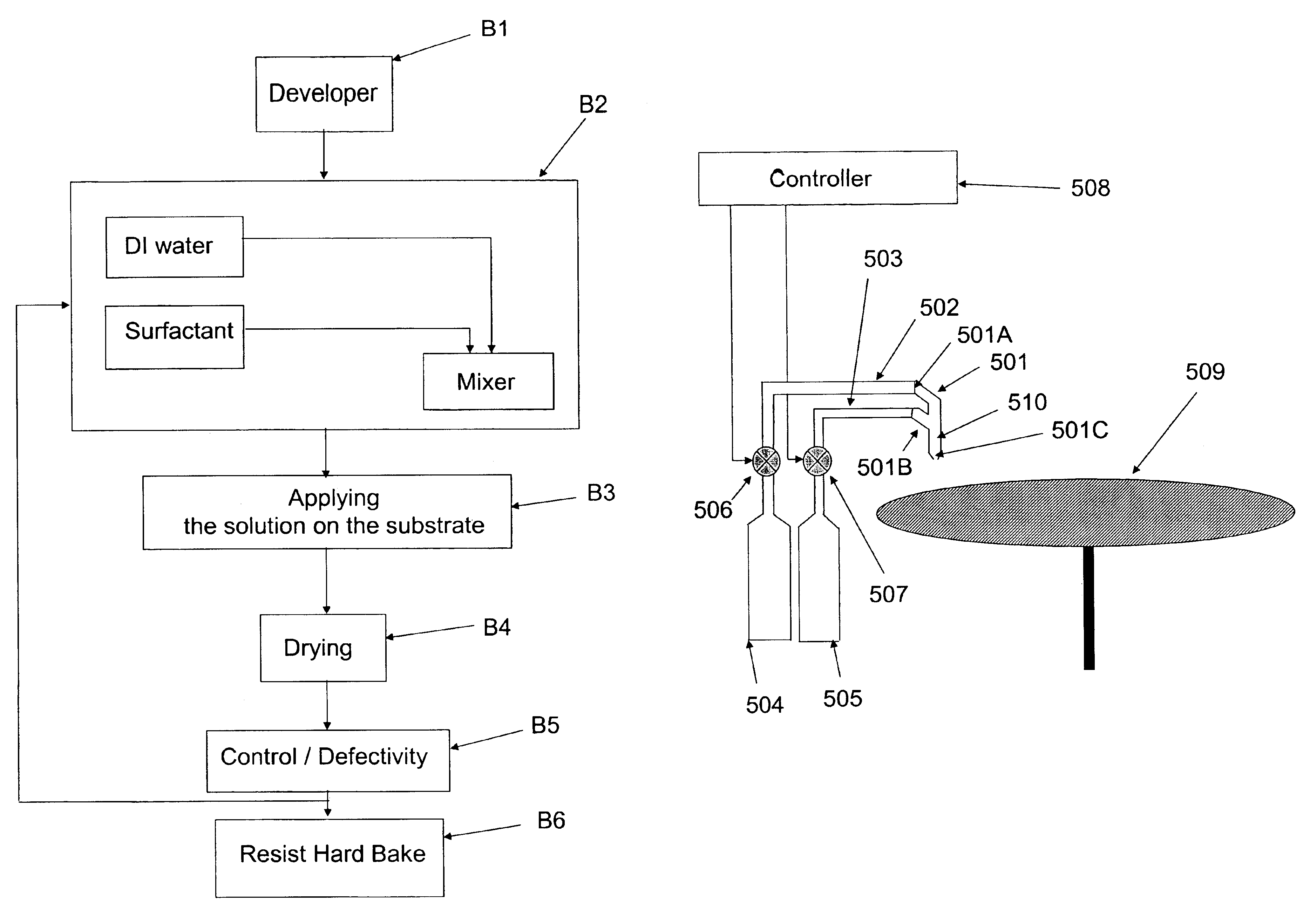Method for developing a photoresist pattern
a technology of resist and pattern, applied in the direction of liquid processing circulation, coating, photographic processes, etc., can solve the problems of resist line collapse, resist line mechanical stability decline, resist line collapse, etc., and achieve the effect of reducing post-development defects
- Summary
- Abstract
- Description
- Claims
- Application Information
AI Technical Summary
Benefits of technology
Problems solved by technology
Method used
Image
Examples
Embodiment Construction
In the following description, in order to facilitate a thorough understanding of the invention and for purposes of explanation and not limitation, specific details are set forth, such as the process steps to reduce post-development defects or a particular geometry of the mixing nozzle. However, it should be understood that the invention may be practiced in other embodiments that depart from these specific details.
In the present document, the term “photoresist pattern” is used to encompass a latent image formed on the photoresist layer, after exposure, and a developed photoresist pattern.
Basic steps that may be used in the photoresist process for the fabrication of an IC device according to one embodiment of the invention are illustrated in FIG. 1.
The method begins at (S1) where a surface cleaning and a dehydration baking are carried out to prepare the surface for photoresist application, though as one of ordinary skill in the art will appreciate, this step is not always necessary. T...
PUM
 Login to View More
Login to View More Abstract
Description
Claims
Application Information
 Login to View More
Login to View More - R&D
- Intellectual Property
- Life Sciences
- Materials
- Tech Scout
- Unparalleled Data Quality
- Higher Quality Content
- 60% Fewer Hallucinations
Browse by: Latest US Patents, China's latest patents, Technical Efficacy Thesaurus, Application Domain, Technology Topic, Popular Technical Reports.
© 2025 PatSnap. All rights reserved.Legal|Privacy policy|Modern Slavery Act Transparency Statement|Sitemap|About US| Contact US: help@patsnap.com



